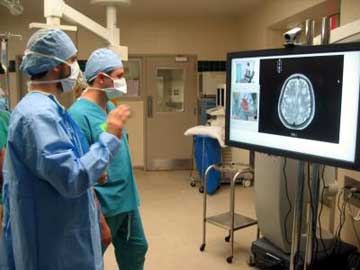Israeli researchers from the Ben-Gurion University of the Negev (BGU) have developed a new hand gesture recognition system that enables doctors to manipulate digital images during medical procedures by motioning instead of touching a screen, keyboard or mouse.
The so-called Gestix system has already been successfully used in an actual "in vivo" neurosurgical brain biopsy at the Washington Hospital Center in Washington, DC.
The researchers who developed the system claim that it could replace touch screens now used in many hospital operating rooms which presently must be sealed and thoroughly cleaned after each procedure to stop infectious diseases from spreading.
Before the system can be used, however, it must first be taught to recognise a surgeon's hand gestures. Next, surgeons must learn eight navigational gestures to move the image on the screen. These involve rapidly moving their hands away from a "neutral area" and back again.
'Users even have the option of zooming in and out (of an image) by moving the hand clockwise or counterclockwise,' said Prof Helman Stern, a professor from the Department of Industrial Engineering and Management at BGU.

Two surgeons manipulate brain images using a hand gesture recognition system developed by researchers at Ben-Gurion University of the Negev. The system is trained to recognise specific movements so a sterile environment can be maintained while reading digital images during a medical proceedure




Red Bull makes hydrogen fuel cell play with AVL
Formula 1 is an anachronistic anomaly where its only cutting edge is in engine development. The rules prohibit any real innovation and there would be...